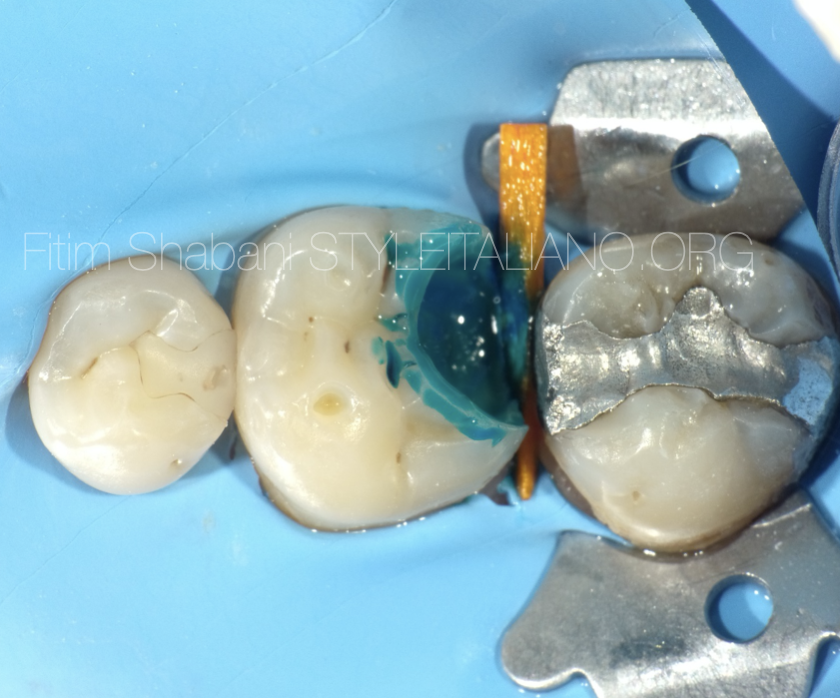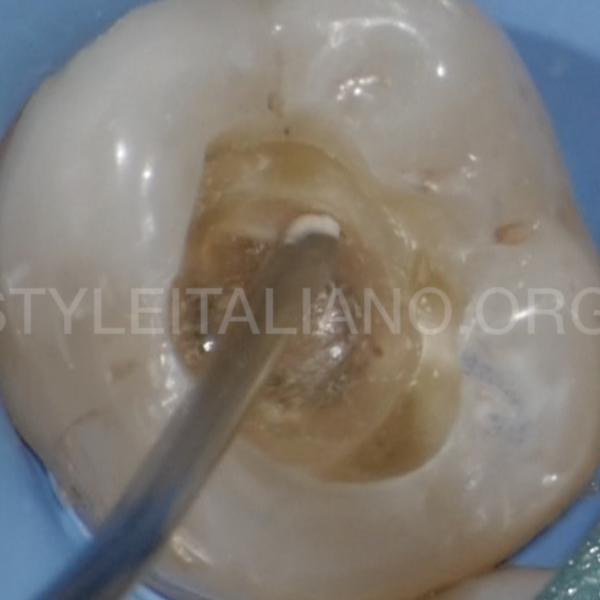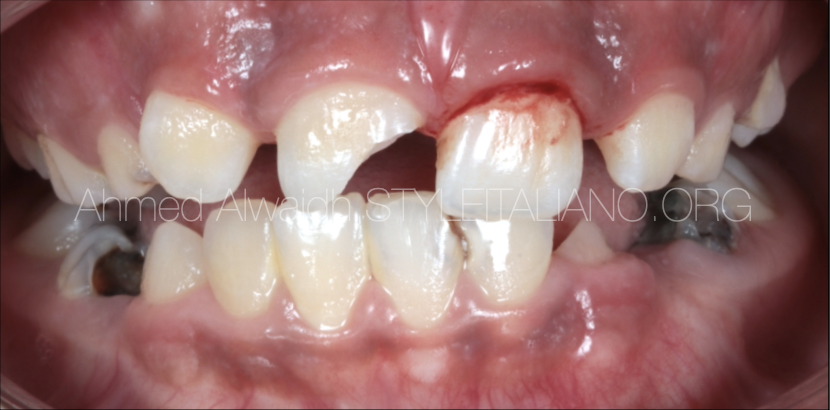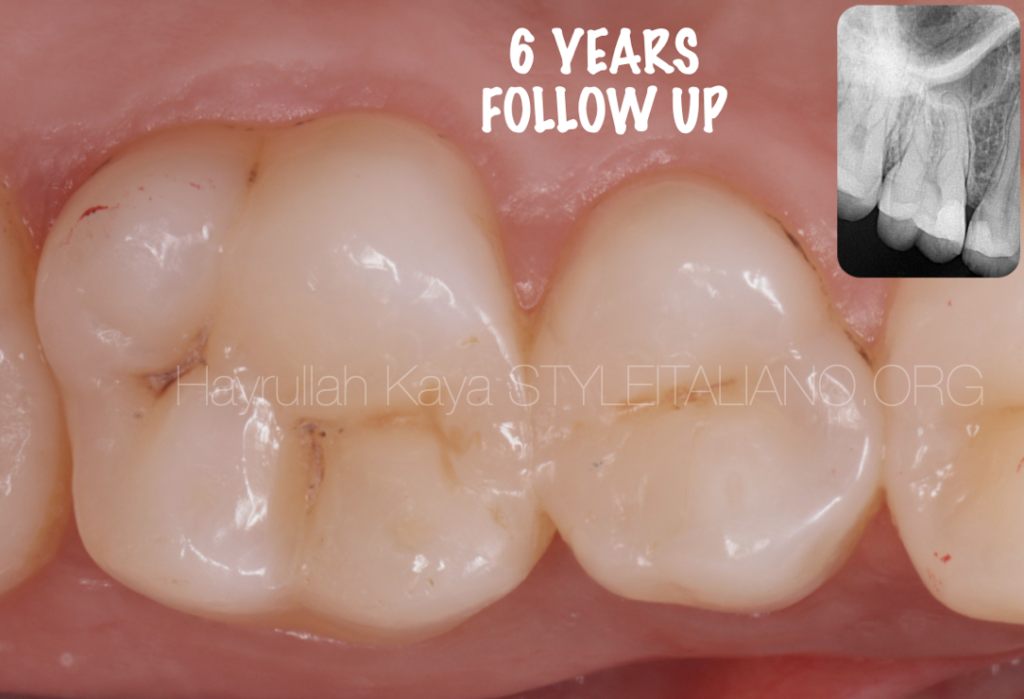
Direct pulp capping with MTA: 6 years follow-up
11/11/2023
Hayrullah Kaya
Warning: Undefined variable $post in /var/www/vhosts/styleitaliano-endodontics.org/endodontics.styleitaliano.org/wp-content/plugins/oxygen/component-framework/components/classes/code-block.class.php(133) : eval()'d code on line 2
Warning: Attempt to read property "ID" on null in /var/www/vhosts/styleitaliano-endodontics.org/endodontics.styleitaliano.org/wp-content/plugins/oxygen/component-framework/components/classes/code-block.class.php(133) : eval()'d code on line 2
The primary objective of modern dentistry is the preservation of vital pulp tissue. In the traditional approach, when deep caries caused exposure of the pulp, the treatment method used was root canal therapy. Historically, Ca(OH)2 was used to maintain pulp vitality despite having several disadvantages. In contemporary dentistry, with the advent of advanced bioactive dental materials, these materials can now be used more effectively to maintain pulpal vitality when the pulp is exposed. Essentially, the term "bioactive" refers to a restorative material that exhibits a biological effect or is biologically active. A bioactive material is one that encourages the formation of various mineral bonds on the sub-dentin layer, essentially over the pulp, thereby maintaining pulp vitality. This is achieved by the material developing an “apatite like surface’ layer in the presence of an inorganic phosphate solution, which in turn promotes cellular adhesion, thus enabling the continuation of tooth vitality.
MTA (Mineral Trioxide Aggregate) is a bioactive material discovered by Torabinejad and colleagues at Loma Linda University in 1993, receiving FDI approval in 1998. MTA has various advantages in direct pulp capping. It maintains a high alkaline pH and sustains this property over the long term. It exhibits antibacterial properties against bacteria, non-cytotoxic, and remains stable without undergoing significant resorption, all the while demonstrating minimal marginal bacterial leakage. Due to these outstanding qualities, MTA can be used in vital treatments for long-term success.
In this case report I will present step by step treatment of direct pulp capping with 6 years follow-up.
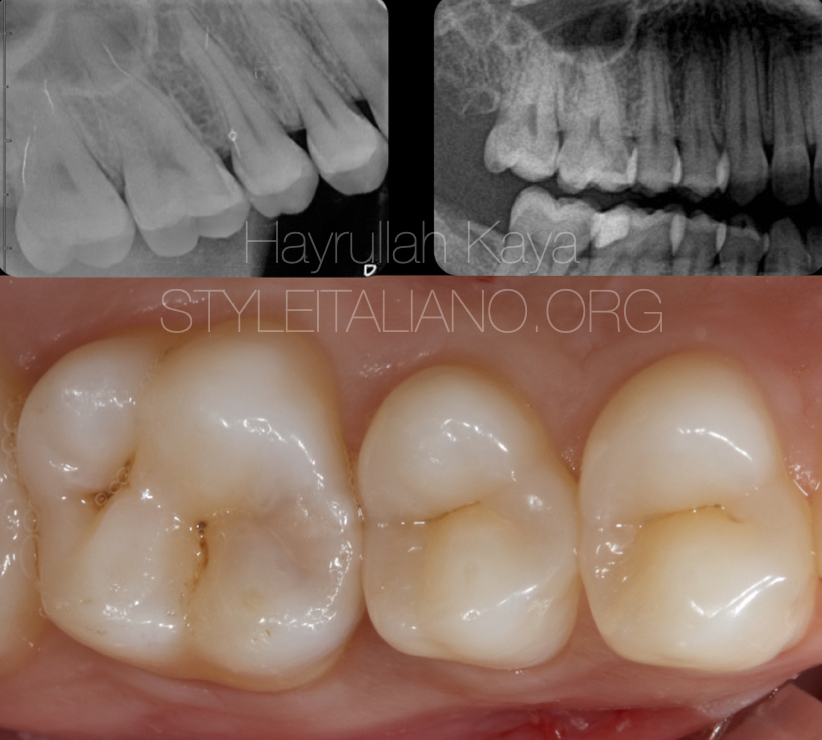
Fig. 1
A 24-year-old adult patient presented to the clinic for general control.
The patient has no complaints or symptoms
Preoperative x-rays showed the presence of deep caries in the maxillary first molars and second premolars.
Cold test positive
Negative percussion

Fig. 2
The dark reflection of the caries at the proximal of the tooth iwas seen.
Rubber dam isolation of posterior segment
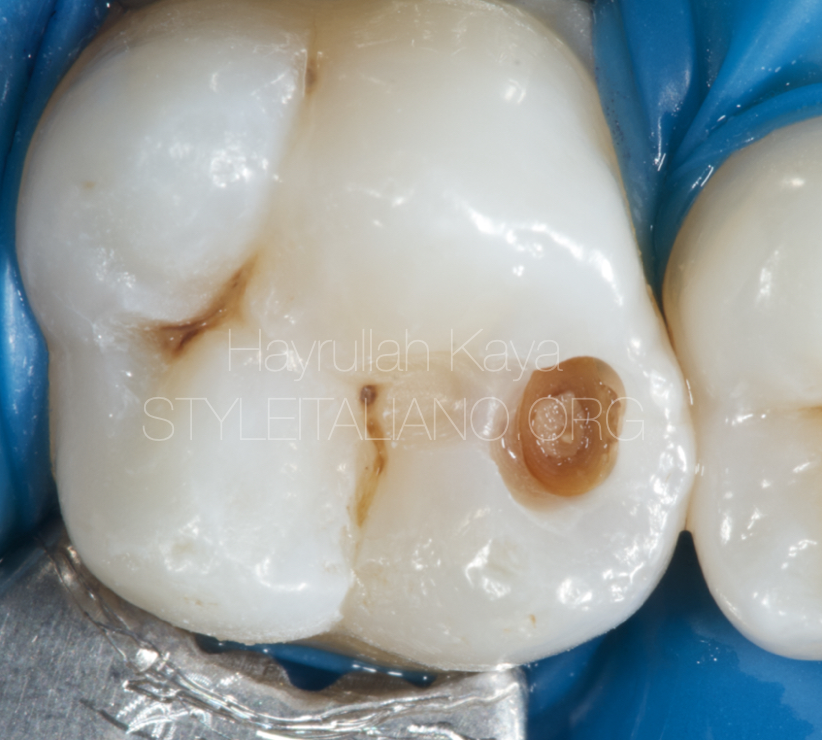
Fig. 3
Cavity preparation started from the occlusal surface

Fig. 4
It was observed that the caries progressed towards the proximal contact point of the tooth.
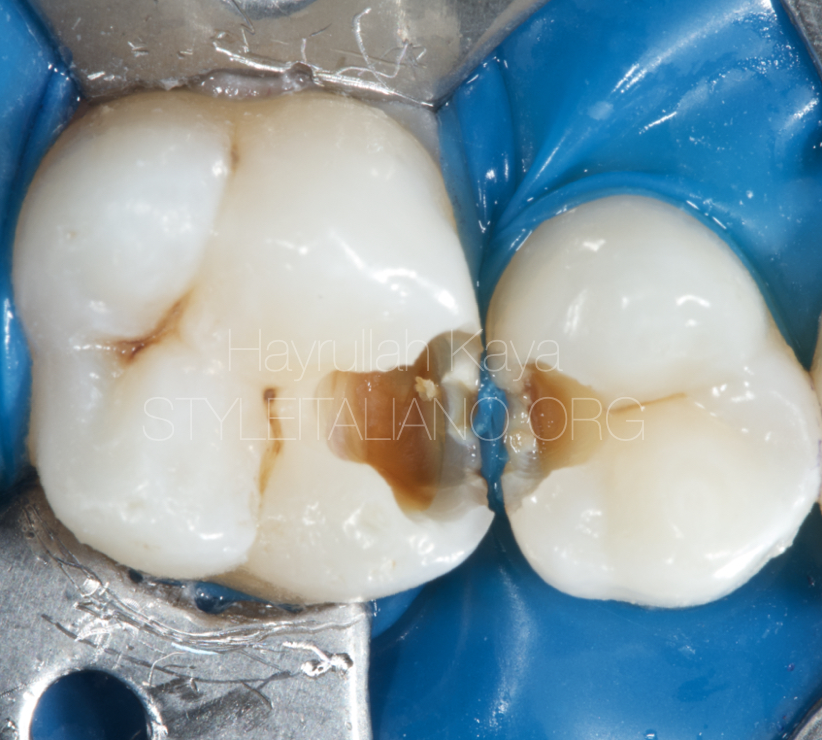
Fig. 5
As the caries of the molar tooth was removed, it was observed that there was caries on the distal wall of the premolar tooth. At the same time, caries of premolar tooth was also removed.

Fig. 6
All caries of molar and premolar teeth were removed
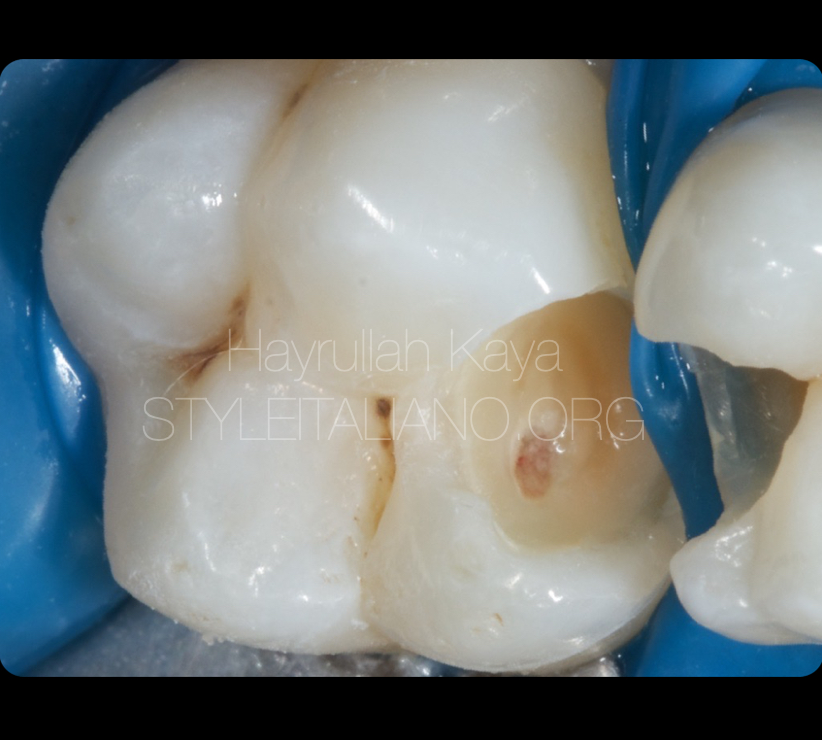
Fig. 7
After removing caries, exposed pulp on molar tooth was seen.
Bleeding control was achieved with sodium hypochlorite after pulp exposure.
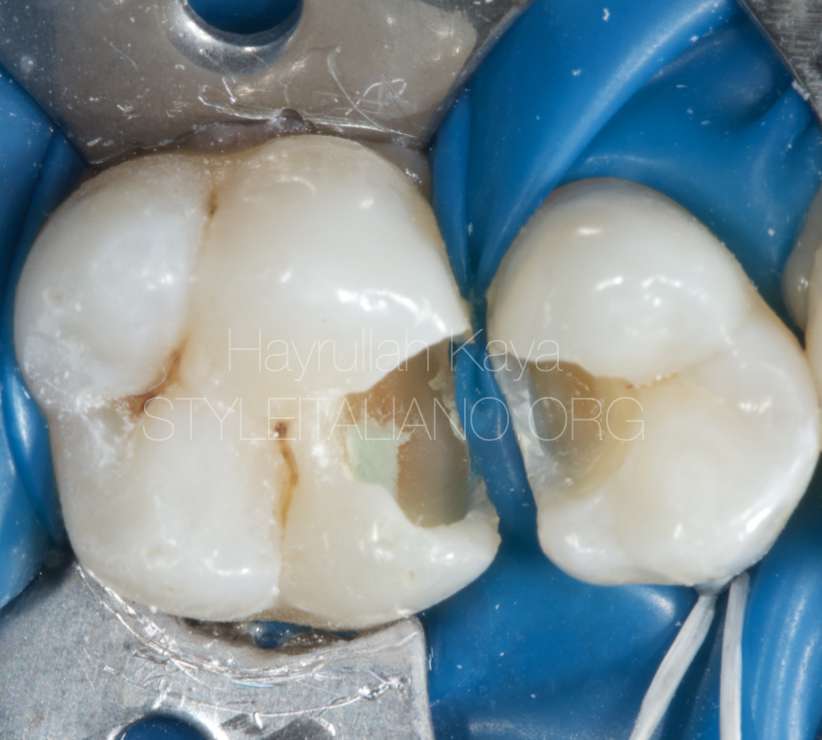
Fig. 8
Direct pulp capping with Mineral Trioxide Aggregate (MTA) on molar tooth
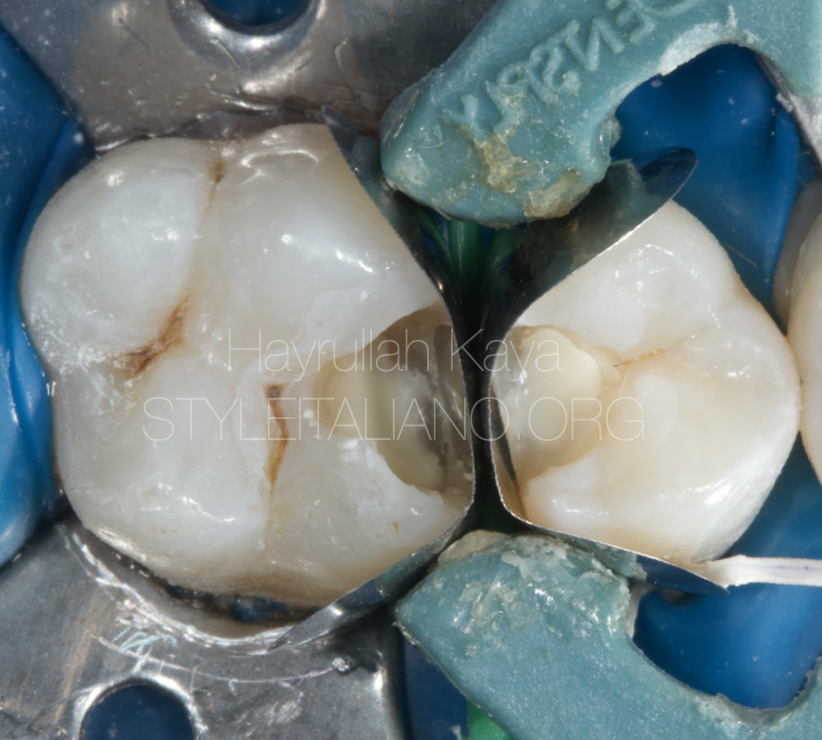
Fig. 9
Application of dentin liner over MTA
Placement of sectional matrix system

Fig. 10
Composite restoration of the premolar distal wall
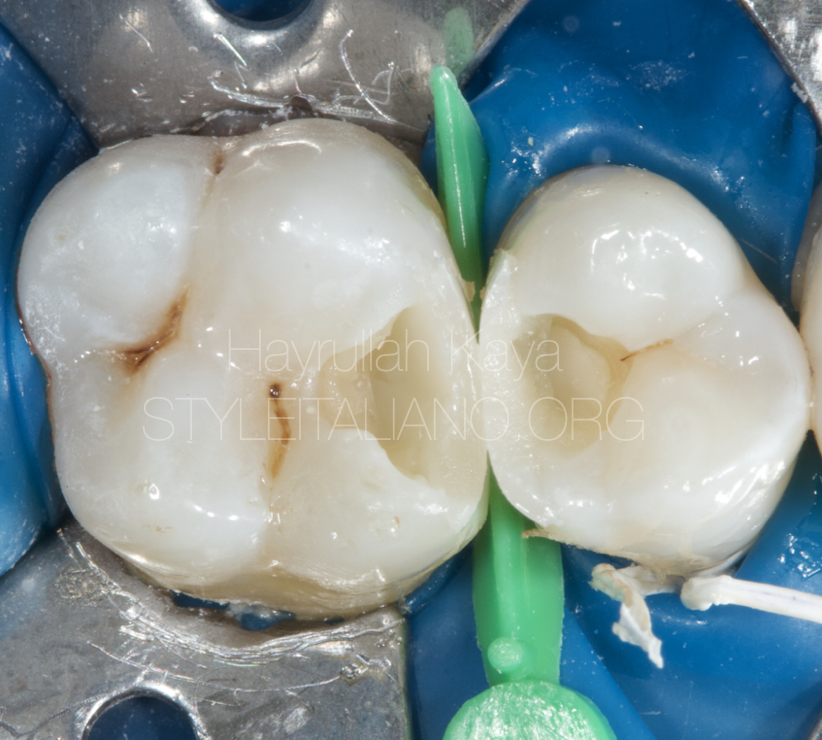
Fig. 11
Composite restoration of the molar mesial wall
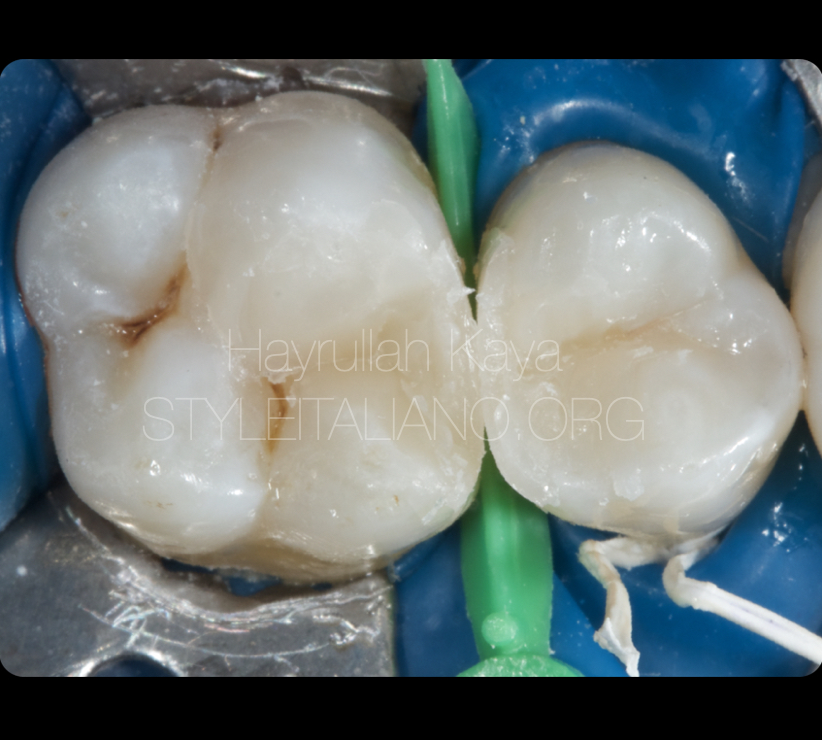
Fig. 12
Composite restoration of molar and premolar tooth from occlusal aspect
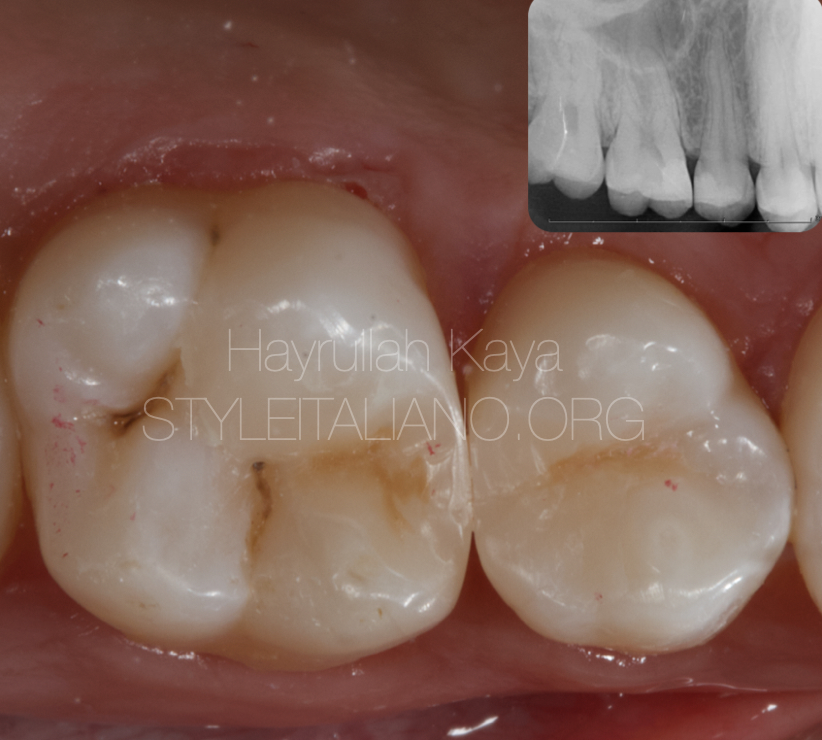
Fig. 13
Finishing and periapical control film
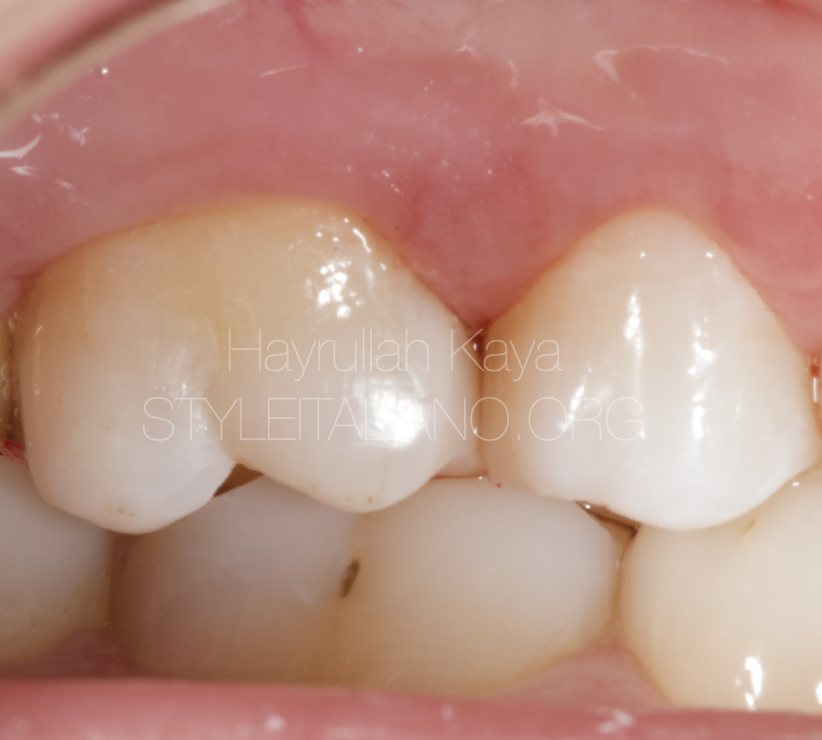
Fig. 14
Occlusion control from buccal aspect
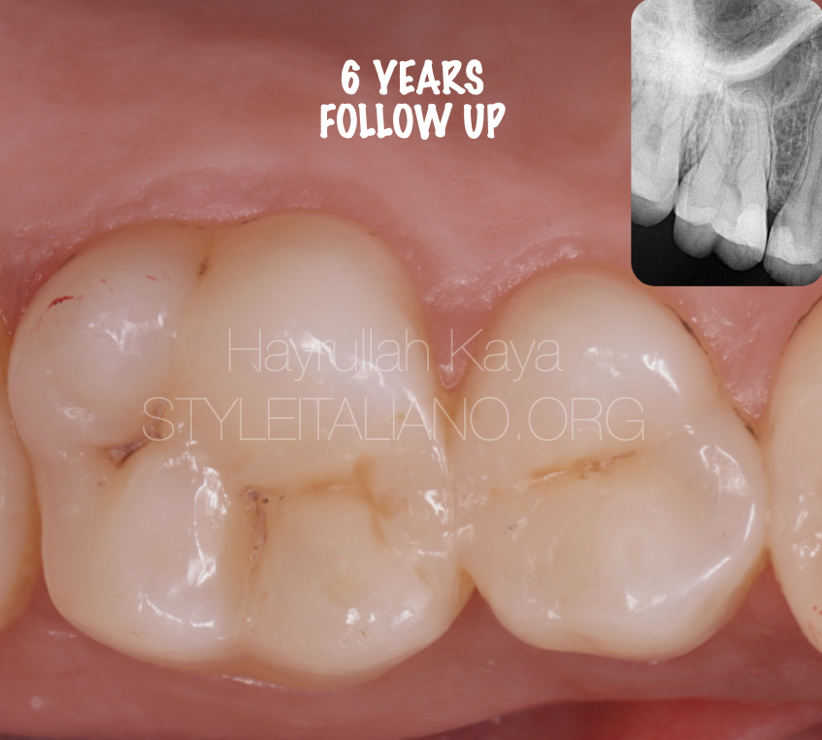
Fig. 15
The 6 years follow-up and control with X-ray
The patient presents with no complaints, symptoms and pathological changes.
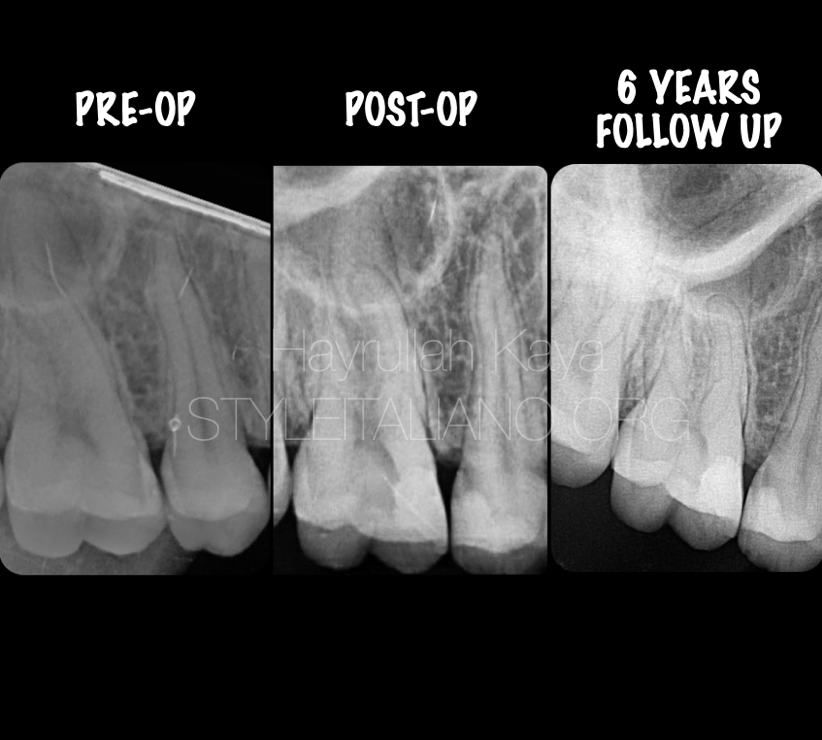
Fig. 16
X-rays taken during the pre-operative, post-operative, and 6-year follow-up periods.
Conclusions
Direct pulp capping procedures offer the advantage of minimal invasiveness in cases of pulp exposure in permanent dentition. The usage of a MTA material that is biocompatible, bioactive, and possesses sealing capabilities in such contexts has the potential to significantly improved the long-term success.
Bibliography
Sealing ability of a mineral trioxide aggregate when used as a root end filling material , M Torabinejad 1 , T F Watson, T R Pitt Ford
Cohen’s Pathways of the Pulp. Hargreaves KM, Berman LH. Eleventh edition 2016 Elsevier Inc. St Louis, Missouri 63043.
Endodontics: Principles and Practice. Torabinejad M, Walton RE. Fourth edition 2009 Elsevier Limited, The Boulevard, UK
Endodonti . Aşçı SK. 2014 Quintessence Yayıncılık Ltd.Şti. İstanbul
Ingle’s Endodontics. Ingle JI, Bakland LK, Baumgartner JC. 2008 BC Decker Inc.Hamilton, Ontario
Ricketts D. Management of the deep carious lesion and the vital pulp dentine complex Br Den J2001;191(11)-606-610
Analysis of pulpal to restorative Procedures, Materials , Pulp Capping and Future , Murray, P.e , Windsor, J.L , Smyth, T.W , hafez , A.A&Cox, C.f,
Effect of mineral trioxide aggregate on proliferation of cultured human dental pulp cells. T. Takita, M. Hayash, O. Takeichi, B. Ogiso, N. Suzuki.


